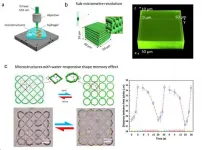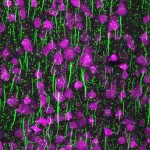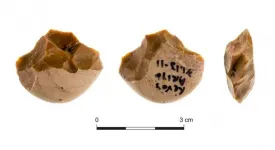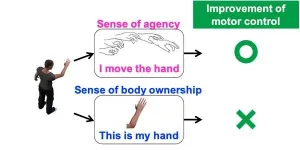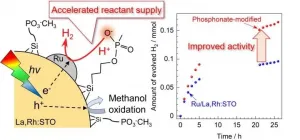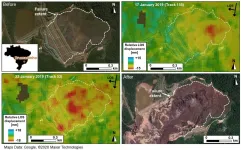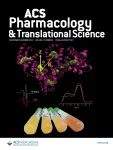Butterfly wing clap explains mystery of flight
2021-01-21
(Press-News.org) The study explains the benefits of both the wing shape and the flexibility of their wings.
The Lund researchers studied the wingbeats of freely flying butterflies during take-off in a wind tunnel. During the upward stroke, the wings cup, creating an air-filled pocket between them. When the wings then collide, the air is forced out, resulting in a backward jet that propels the butterflies forward. The downward wingbeat has another function: the butterflies stay in the air and do not fall to the ground.
The wings colliding was described by researchers almost 50 years ago, but it is only in this study that the theory has been tested on real butterflies in free flight. Until now, the common perception has been that butterfly wings are aerodynamically inefficient, however, the researchers suggest that the opposite is actually true.
"That the wings are cupped when butterflies clap them together, makes the wing stroke much more effective. It is an elegant mechanism that is far more advanced than we imagined, and it is fascinating. The butterflies benefit from the technique when they have to take off quickly to escape from predators", says biology researcher Per Henningsson, who studied the butterflies' aerodynamics together with colleague Christoffer Johansson.
"The shape and flexibility of butterfly wings could inspire improved performance and flight technology in small drones", he continues.
In addition to studying the butterflies in a wind tunnel, the researchers designed mechanical wings that mimic real ones. The shape and flexibility of the mechanical wings as they are cupped and folded confirm the efficiency.
"Our measurements show that the impulse created by the flexible wings is 22 percent higher and the efficiency 28 percent better compared to if the wings had been rigid", concludes Christoffer Johansson.
https://youtu.be/XmjleqxRTV8
https://youtu.be/FfeiU_eIB1c
INFORMATION:
ELSE PRESS RELEASES FROM THIS DATE:
2021-01-21
Three-dimensional (3D) direct laser writing (DLW) based on two-photon polymerisation (TPP) is an advanced technology for fabricating precise 3D hydrogel micro- and nanostructures for applications in biomedical engineering. Particularly, the use of visible lasers for the 3D DLW of hydrogels is advantageous because it enables high fabrication resolution and promotes wound healing. Polyethylene glycol diacrylate (PEGda) has been widely used in TPP fabrication owing to its high biocompatibility. However, the high laser power required in the 3D DLW of PEGda microstructures using a visible laser in a high-water-content environment limits its applications to only those below the biological laser power safety level.
In a new paper ...
2021-01-21
Rather like David versus Goliath, it appears that Saturn's tilt may in fact be caused by its moons. This is the conclusion of recent work carried out by scientists from the CNRS, Sorbonne University and the University of Pisa, which shows that the current tilt of Saturn's rotation axis is caused by the migration of its satellites, and especially by that of its largest moon, Titan.
Recent observations have shown that Titan and the other moons are gradually moving away from Saturn much faster than astronomers had previously estimated. By incorporating this increased migration rate into their calculations, the researchers concluded that ...
2021-01-21
To process information in our brains, nerve cells produce brief electrical impulses, called action potentials, triggered from one highly specialized region. Research from the Netherlands Institute for Neuroscience, together with researchers from Heidelberg University and the University of Göttingen in Germany, now show that the electrical trigger sites surprisingly change with experience; they are either becoming smaller with increasing number of experiences and, vice versa, they grow larger when less input arrives in the brain. The results were published in Nature Communications.
Exploring the environment
Rodents learn about their environment by moving their highly sensitive whiskers, with which they touch ...
2021-01-21
Researchers from the Sonia and Marco Nadler Institute of Archaeology at Tel Aviv University unraveled the function of flint tools known as 'chopping tools', found at the prehistoric site of Revadim, east of Ashdod. Applying advanced research methods, they examined use-wear traces on 53 chopping tools, as well as organic residues found on some of the tools. They also made and used replicas of the tools, with methods of experimental archaeology. The researchers concluded that tools of this type, found at numerous sites in Africa, Europe and Asia, were used by prehistoric humans at Revadim to neatly break open bones of medium-size animals such as fallow deer, gazelles and ...
2021-01-21
UV-radiation can affect hormone levels of postmenopausal women negatively and this may contribute to several health issues.
The concentration of oestrogens in the blood affects a woman's health in many ways. For example, oestrogens contribute to a strong bone structure and help wounds heal more quickly:
"When a woman reaches menopause, we see the levels of oestrogens decline and an increase of other hormones, called gonadotropins", says Kai Triebner at the University of Bergen.
For several years, he has studied the hormonal balance of women in relation to menopause: What effects changing hormone levels ...
2021-01-21
With Japan's society rapidly aging, there has been a sharp increase in patients who experience motor dysfunctions. Rehabilitation is key to overcoming such ailments.
A researcher from Tohoku University has developed a new virtual reality (VR) based method that can benefit rehabilitation and sports training by increasing bodily awareness and?improving motor control.
His research was published in the Journal Scientific Report.
Not only can we see and touch our body, but we can sense it too. Our body is constantly firing off information to our brains that tell us where our limbs are in real-time. This process makes us aware of our body and gives us ownership over it. Meanwhile, our ability to control ...
2021-01-21
Water splitting research for solar hydrogen production has focused on physical processes inside the semiconductor, such as light absorption, charge separation, and chemical processes on the surface that are highly complex and rely on the development of new materials. However, processes inside the solution had yet to be thoroughly explored.
One recent approach to improve photocatalytic hydrogen production was proposed by loading phosphonate groups on the surface of the visible-light-responsive photocatalyst lanthanum and rhodium-doped strontium titanate (La,Rh:STO) with a silane coupling agent. The phosphonate functional group functions as a mediator of proton supply (i.e., promotes the supply of reactants) and improves hydrogen production activity.
There have been ...
2021-01-21
Just a few millimetres thick, articular cartilage plays a crucial role in our musculoskeletal system, since it is responsible for smooth (in the truest sense of the word) movement. However, the downside of its particular structure is that even minor injuries do not regenerate. Timely treatment of cartilage damage is therefore essential. Biomaterials are often used to support the cells, their distribution and protection. In most cases, this treatment significantly improves the patient's clinical symptoms but fails to fully restore the cartilage to its original state. The working group led by Sylvia Nürnberger (MedUni Vienna's Department of Orthopedics and Trauma Surgery) ...
2021-01-21
One of Brazil's worst environmental disasters - a dam collapse that also killed more than 200 people - could have been foreseen with the right monitoring technology, according to a new study by the University of Nottingham and Durham University.
The high-profile catastrophe took place on 25 January 2019 at a tailings dam near the Córrego do Feijão iron ore mine, close to the town of Brumadinho, in Minas Gerais state, south-east Brazil.
When the dam collapsed, it caused a torrent of sludge to cover surrounding land; taking lives, destroying homes and livelihoods and polluting rivers with toxic material.
Owned by Vale, Brazil's largest mining company, the tailings dam was ...
2021-01-21
A protein found commonly in human blood might help with the detection of hard-to-diagnose pancreatic tumours. Researchers at Martin Luther University Halle-Wittenberg (MLU), the Alfried Krupp Hospital in Essen and the University of Witten/Herdecke have developed approach using the protein's structure and its function as a proxy for this. In a first study in ACS Pharmacology & Translational Science, the team shows how its method can also be used to differentiate between benign and malignant tumours.
Pancreatic cancer is particularly insidious: "It remains asymptomatic for a long time, which leads to very late diagnoses and therefore a low chance of treating it successfully," says Dr Marcos Gelos from the Alfried Krupp Hospital and Witten/Herdecke University who ...
LAST 30 PRESS RELEASES:
[Press-News.org] Butterfly wing clap explains mystery of flight
